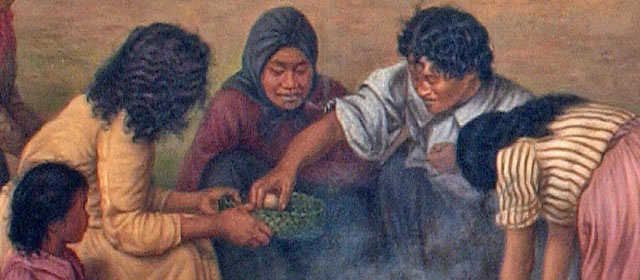Story summary
What are iwi and hapū?
The iwi (tribe) is the largest of the groups that form Māori society. Each iwi is made up of various hapū (clans or descent groups), which might have up to several hundred members. Traditionally, the main purposes of a hapū were to defend land, and to provide support for its members.
How iwi and hapū formed
Some tribal groups formed from links to the waka (canoe) on which their founding ancestor arrived in New Zealand from Hawaiki. For example, the Waikato tribes trace their descent from the Tainui waka. Others developed when the pressure on resources such as land and food became so great that some members had to move away and establish themselves elsewhere. War, migration and family infighting also caused new iwi or hapū to emerge.
Iwi and hapū are often named after an ancestor. For example, Ngāpuhi means ‘the people of Puhi’ and Te Uri-o-Rātā means ‘the descendants of Rātā’. Sometimes tribal names came from an important event that involved their ancestor, such as a battle.
Whānau – family
Each hapū is made up of whānau (extended families). Whānau included much-respected elders, adults, children and grandchildren. Everyone helped each other, working for the group and caring for each other’s children and the elderly.
Social groups
Each hapū was made up of different-ranking members, headed by chiefs called ariki and rangatira. First-born females also had high status. Experts in areas such as history and tradition, carving and healing were called tohunga. There were commoners and sometimes captives or slaves in each hapū.
Changes after European contact
After New Zealand became a British colony, the way that iwi and hapū functioned began to change. When the government bought or confiscated Māori land in the 19th century, tribes were dispersed. From the mid-20th century, when many younger people moved to the cities for greater work opportunities, tribal power was diminished. From the late 20th century, however, tribal organisations have worked to reconnect people with their tribal origins.





